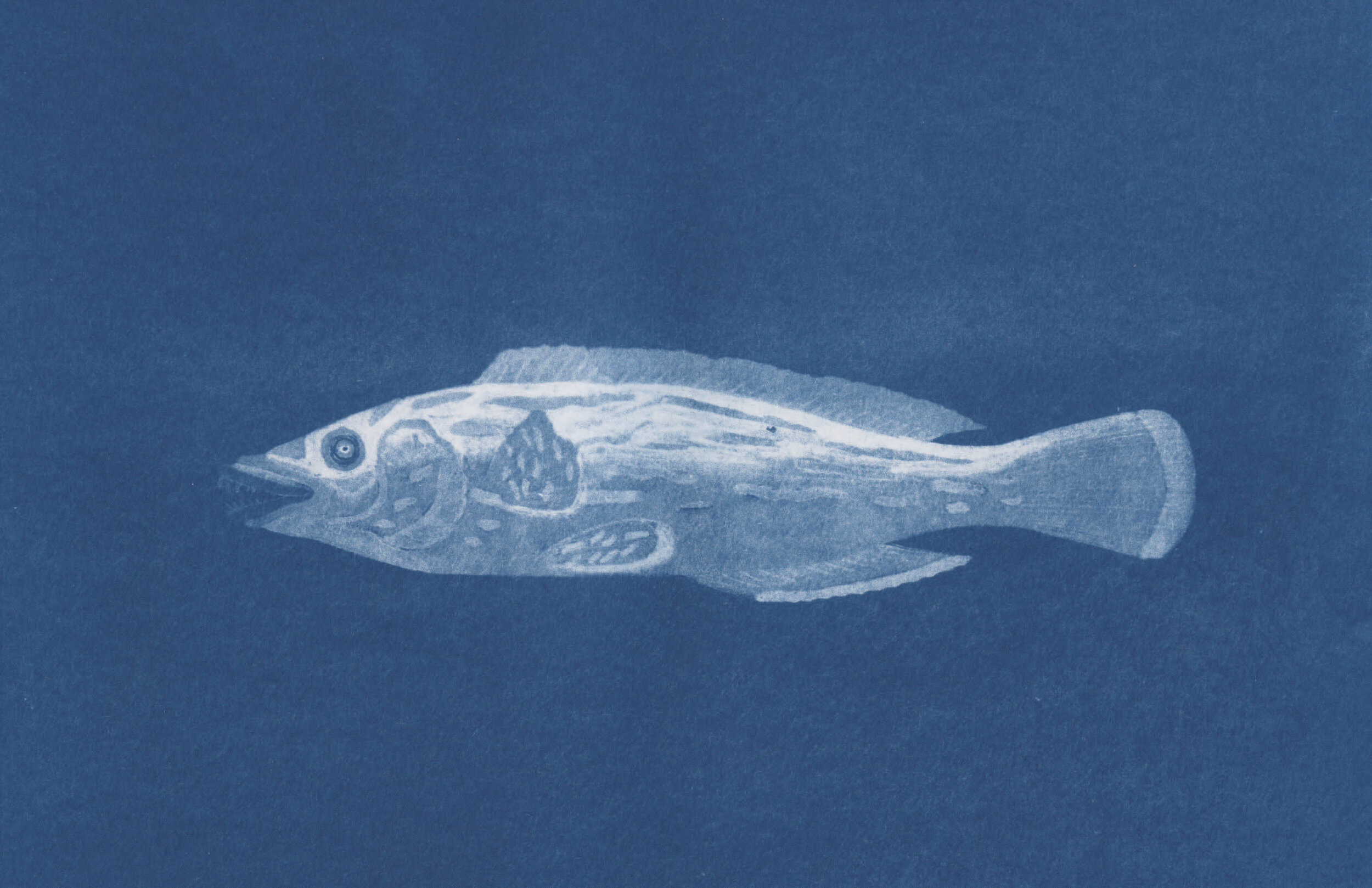Biotypes (2019) comes in two parts. The first is a “biological cyanotype”. Biological illustrations are sourced from George Shaw’s The Naturalist’s Miscellany published in 1798. Shaw was a biologist and curator at the British Museum of Natural History. The Naturalist’s Miscellany was his last work of pictorial zoology with illustrations by Frederick Polydore Nodder. These animals are drawn posed for the viewer to scientifically identify them and we notice several visual tropes happening. Continuing on the theme of science these biological illustrations, edited and printed as negatives, are then developed into “biological cyanotypes”. This process is a reference to Anna Atkins whose original cyanotypes are the cornerstone of biology and photography. Atkins herself published biology and photography books alike. The imagery was necessary to lay down a scientific foundation, the practice is completed through Atkins originally biological process.
The second part is a series of original portraits. These poses and gazes are used to emulate foreign anatomies. Influence comes from Eadweard Muybridge’s Animals in Motion. Muybridge’s book and his other work contain both human and animal locomotion sometimes in direct comparison. The subtle but ever-present physical similarities are a captivating reminder of our commonality to the animal kingdom.
Together, these works are meant to identify the overlapping visual and emotional characteristics between animals and humans. This is a union of art and science. I am attempting to weave together aesthetics and biology. I want to touch on our own deep connection to other species and express that in a mode similar to how we study them. This work is a biological study through photography.




















